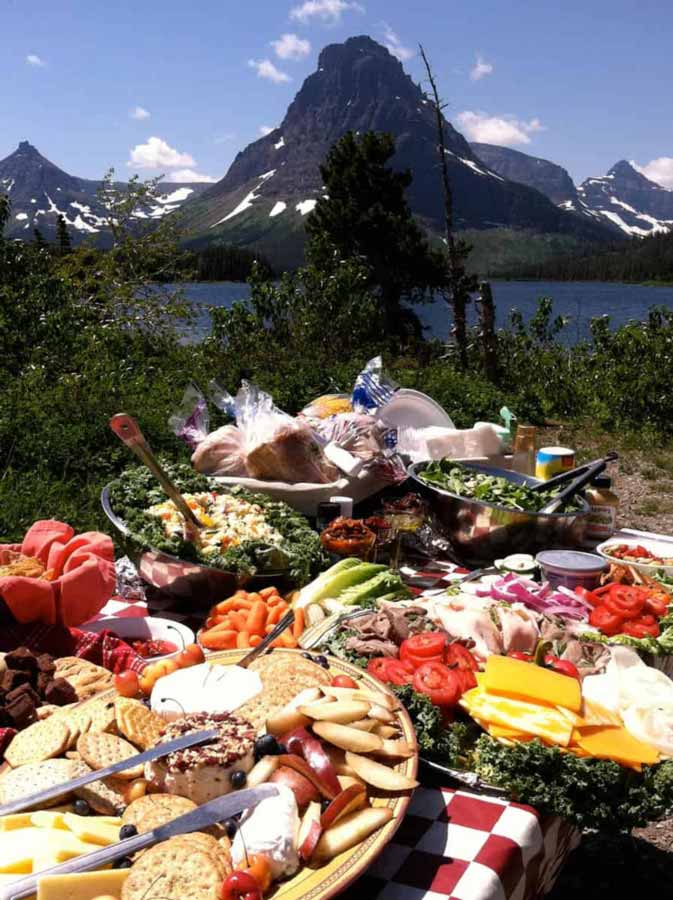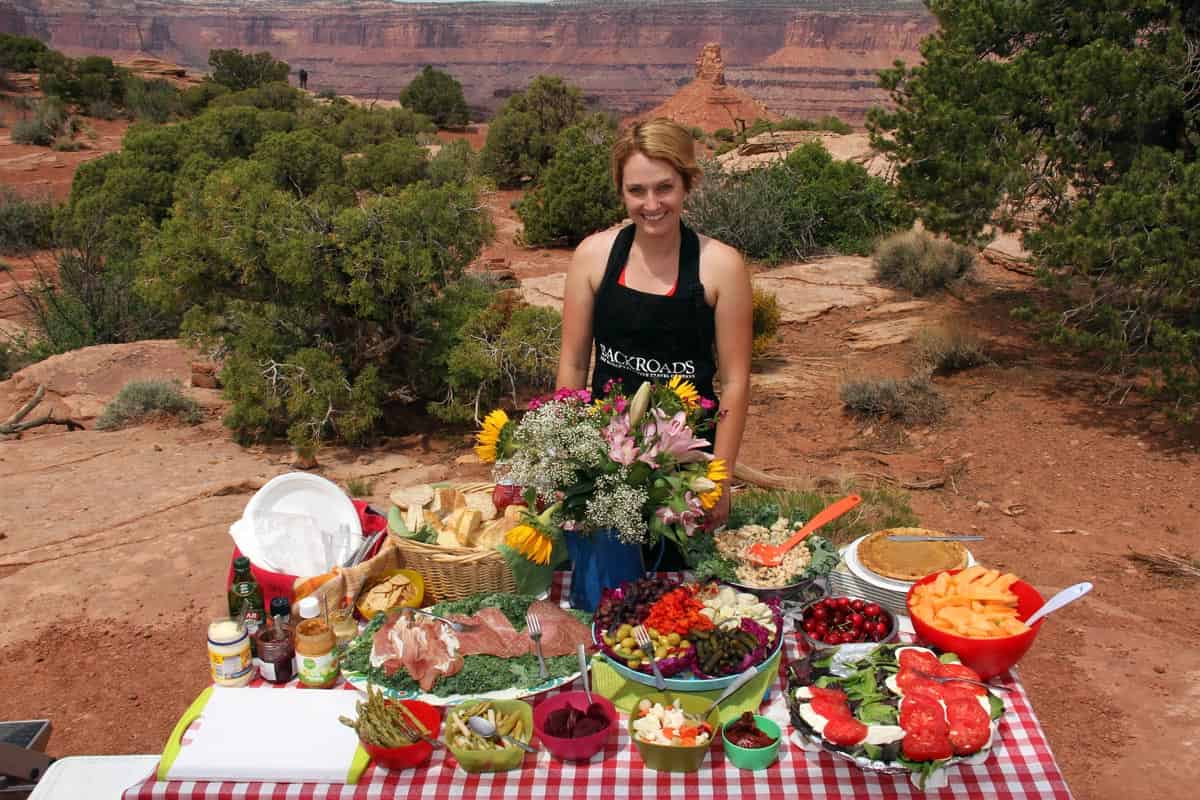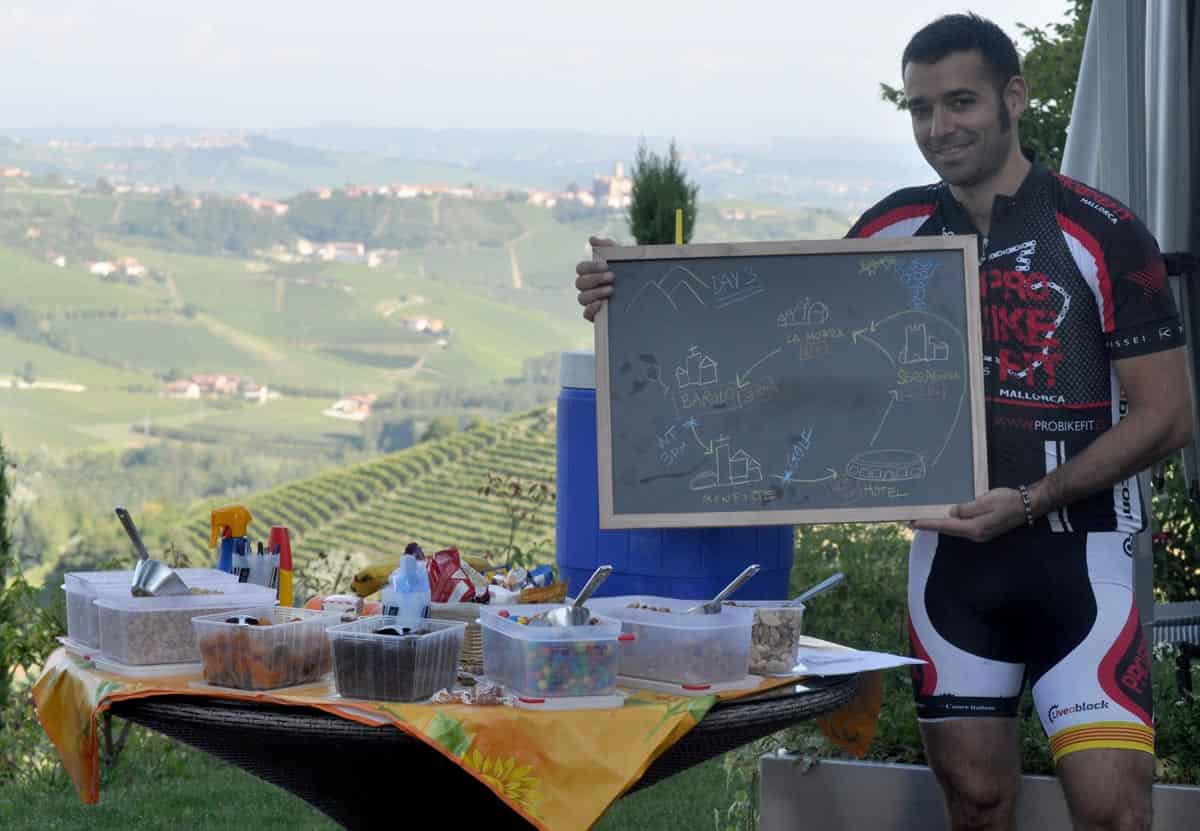Whether you're a newcomer to Backroads or a veteran guest, you'll come to love the ever-present snack table on our trips. You may not know this, but Backroads leaders compete with each other to create the best snack table possible: designing the tallest display of fresh fruit, finding the most interesting energy bars, diversifying the trail mix selection and keeping the peanut butter M&Ms stocked at all times.
Eating on Backroads trips is not only fun, it's necessary! With great activity comes great responsibility to fuel the body, and fuel the body properly. We use the term "bonking" in the athletic world; it means hitting an imaginary wall, reaching a point where you feel depleted of energy and patience. You may even get "hangry"--where hunger meets anger--and it's not a happy place. Luckily, bonking is completely avoidable with proper nutrition, and I'm going to help you and your muscles utilize those M&Ms, raisins and dried apple rings to keep you happy and moving throughout your Backroads adventure.
Q: Why does bonking happen? A: Endurance activity (30 minutes or more of moderate physical activity) uses a great deal of carbohydrates (sugar) and fat, which the body stores in different forms. First the most readily available carbohydrates are burned, from food you ate within a couple hours prior to exercise. Once those nutrients are used up, the body turns to stored sugar and fat, which are found in the muscles and liver. Unfortunately, fat does not produce energy as quickly or efficiently as carbohydrates do, so without refueling carbs, there will be a gap in energy production that leads to--you guessed it--bonking.
Q: So what should I eat to stay fueled? A: Think of eating at three crucial times: pre-activity, during activity and post-activity. Pre-activity: Whole grains and a small amount of fat eaten before activity will digest slowly and therefore delay fatigue throughout the day. However, too much fat (or too much food in general) can cause lethargy and fatigue once you start going. A hearty breakfast on a Backroads trip might include whole-grain toast with a tablespoon of nut butter and a glass of orange juice or two medium whole-grain pancakes with a tablespoon of jam or syrup and two eggs. During activity: Keep eating and drinking simple sugars that will top off available energy and increase the efficient use of fat. The general rule of thumb is to consume between 100 and 200 calories during each hour of activity. If the ride calls for 20 miles before lunch (around two hours), plan to consume 200-400 calories before getting to lunch. What does that mean in terms of Backroads snacks? A handful of raisins and nuts, a banana or two handfuls of pretzels each have about 100 calories. Energy bars like Clif Bar and LÄRABAR have about 200 calories each.
Post-activity: Refuel at the end of day with a good mix of protein (to rebuild muscle), fats (to restore long-term energy) and complex carbohydrates (to immediately feed your muscles). Chocolate milk offers a fantastic blend of protein, fat and sugar. At the dinner table? Fish doubles as a protein and fat source, and beans and rice eaten together make a complete protein. What you eat today will prepare you for tomorrow's adventure. Q: Should I drink water or Gatorade during activity? A: Staying hydrated is vital to keep all systems working properly--especially digestion. A good trick is to alternate sipping from one bottle of water and one of a sports drink such as Gatorade. Sports drinks are an excellent source of sugar and electrolytes, refueling and rehydrating at the same time.
Whether you're breezing through the valley in Glacier National Park on a bike or basking in the Cinque Terre sun on a hike, go ahead and reach into that bag of delicious M&Ms and fuel your mind, body and soul simultaneously.















